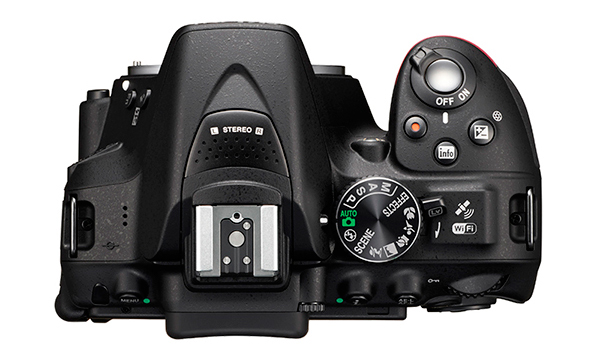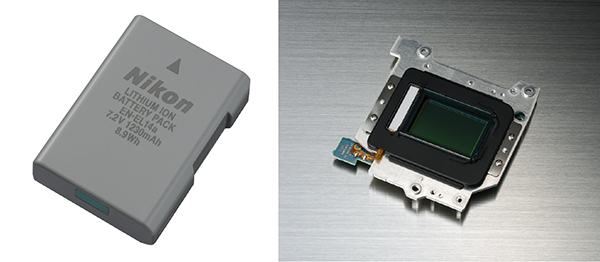Nikon Nikon D5300 Buy Cheap at a glance:
- 24.2-million-pixel, APS-C-sized CMOS sensor
- 1.037-million-dot, 3.2in, 170° LCD screen
- Expeed 4 image processor
- 39-point AF system with nine cross-type sensors
- ISO 100-25,600
- Price £730 body only
- See product shots of the Nikon D5300
Nikon D5300 - Introduction
While the serious enthusiast is unlikely to be swayed into buying a Nikon DSLR over a Canon model purely because the Nikon camera is newer, the reality is that at the non-premium end of the market this is how some people make their buying decisions. 'Newer' must mean 'better'.
This demand for the 'new' explains why we see such short product cycles in the camera market, and why manufacturers feel the need to introduce even small advances in technology or feature sets in cameras with completely new names - rather than a 'Mark II' type of naming format.
Those familiar with Nikon's range of DSLRs may not see the sense in the company's introduction of the new D5300, especially as Nikon will maintain the D5200 alongside this model in the range - new and old together. By doing so, though, Nikon expands the number of cameras it has on offer and the number of price points it can cover, while also being able to have a model that can carry a 'New' sticker, and which introduces new features to the price band in which it will sit.
That's not to say that the Nikon D5300 isn't different to the D5200, though, as a new processor, new body design and the integration of wireless communications do genuinely bring additional benefits to the photographer.
Nikon D5300 - Design and handling
Nikon is very pleased that it has achieved a new way of constructing camera bodies, which it describes as a 'monocoque'. Instead of there being a chassis, onto which the components and the body shell are attached, the D5300 is designed to have everything screwed to the insides of the body form itself: exoskeleton, rather then the usual endoskeleton.
 Image: The top of the camera houses only a few control points, keeping the layout simple and unintimidating for newcomers. A stereo microphone lives in front of the hotshoe
Image: The top of the camera houses only a few control points, keeping the layout simple and unintimidating for newcomers. A stereo microphone lives in front of the hotshoe The D5300's body shell is also made of a new material, although Nikon won't say what that new material is - just that it is new. The upshot is that the body is less heavy than it might have been, and is 25g lighter, including the battery, than the camera it doesn't replace, the D5200.
I'm not entirely sure that when I used the camera I could appreciate the exact weight loss that has occurred, but I was able to enjoy the fact that this is truly a lightweight DSLR, of the type that we might not mind carrying all day, over the shoulder, in a bag or in a large pocket. The body is very small too, although it is balanced with a reassuringly large grip for the right hand. It seems ironic that a small and light camera should need a large grip, but I found it allowed me to be aware I was carrying the camera, and should a larger lens be attached it will help to support the forward pull of such a weight distribution.
 Image: The body styling will be familiar to those used to the Nikon 5000 series, as will the standard menu. The 3.2in flip-out screen has impressive visibility
Image: The body styling will be familiar to those used to the Nikon 5000 series, as will the standard menu. The 3.2in flip-out screen has impressive visibility The buttons are arranged much as one might expect, with all the principal controls falling easily to the finger or thumb. The rear 3.2in LCD is very nicely bright and clear, with its 1.037-million-dot resolution. Nikon has set the viewing panel into the glass screen, so there are no gaps or internal reflections, which produces good contrast and a clear view from a quoted angled of up to 170°. I am impressed.
In live view, the screen works well when the camera is held low or high, and I found the AF quick enough and seemingly accurate. The response of the shutter in live view also seems good.
 Image: Nikon has retained its choice of layouts for the rear-screen display, with text-based and graphically expressed options to suit personal preferences
Image: Nikon has retained its choice of layouts for the rear-screen display, with text-based and graphically expressed options to suit personal preferences Nikon D5300 - Still to test
The principal changes in this model are of the sort that will only be proved in testing, but at this stage their potential is worth pointing out. Using the higher-capacity Expeed 4 processor, Nikon claims it has been able to reduce noise in its images through the use of more complicated calculations. A related benefit is that now noise levels are lower the company is comfortable offering a higher ISO setting - the Nikon D5300 allows ratings of up to ISO 25,600. More complex calculations also provide the potential for better white balance assessment in automatic modes via a more comprehensive assessment of the scene, and a better rendition of colour overall.
Lower noise should also lead to better resolution of detail from the 24.2-million-pixel sensor, as should Nikon's decision to do without the micro-blurring effects of a low-pass (anti-aliasing) filter. Leaving the low-pass filter off the sensor has become very fashionable, and I suspect it will be a great draw for many photographers. Moiré in images created by a sensor with 24 million pixels, even an APS-C-sized sensor, is still something that is quite likely to occur, but there is also plenty of software to correct it after the event.
The other thing to note is that this model sees the introduction of a new battery cell, which Nikon says increases capacity from 500 shots to 600 compared to the cell used in the D5200. It annoys me when companies change their battery forms, but on this occasion the new cell and that used in the D5200 are interchangeable.
Obviously, I couldn't test the battery life of the camera, but we should take the increase as good news. I will also have to wait to test the Wi-Fi and GPS capabilities of this new model, but neither can be held as negative points just for their inclusion. The Wi-Fi integration means users will be able to control the camera from an Android or iOS device, and will be able to wirelessly transfer images for viewing, editing and sending while on the go.
 Image: The new battery, which is backwards compatible with the D5200, offers a longer life. There is no low-pass filter on the sensor, for extra resolution
Image: The new battery, which is backwards compatible with the D5200, offers a longer life. There is no low-pass filter on the sensor, for extra resolution Nikon D5300 - Conclusion
It would be easy to dismiss the Nikon D5300 for being too similar to the D5200, but that really isn't the point. There is not much wrong with the D5200, and the changes that this new model brings can only make it better. Perhaps Nikon could have called it the D5200 ll, but I'm not sure it matters one bit.
The Nikon D5300 will cost around £730 body only and be available from 14 November.
Source: Amateurphotographer
No comments:
Post a Comment